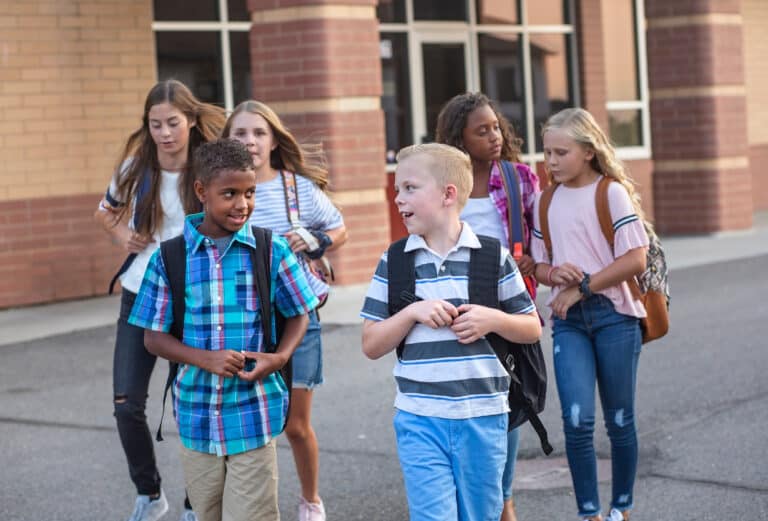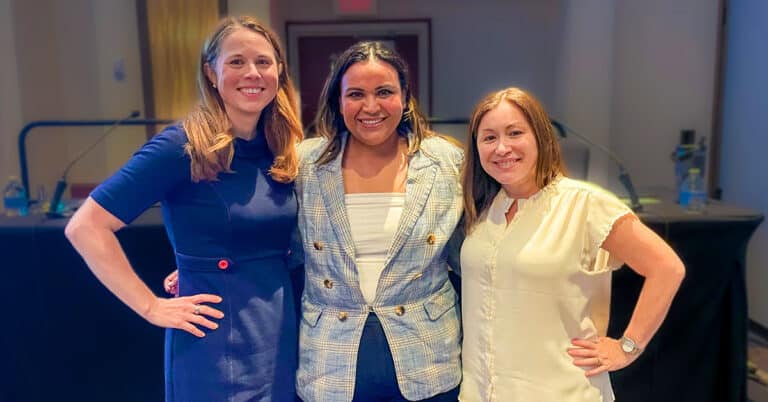This guest article was written by Dr. Lucy Payne, school board chair, and Barb Duffrin, superintendent, of Mahtomedi Minnesota Public Schools.
Small changes can make a big difference in thinking about the future of education. In Minnesota, the legislature is considering redefining instructional hours from hours in a classroom to hours of instructional services.
Seat time as a barrier to innovation and meaningful experiences
Minnesota’s current definition of “instructional hours” puts time as the focus rather than student engagement and student learning. Our current definition of “instructional hours” or “seat time” can be a barrier to considering new and innovative teaching and learning models that work for every student in our district. Instructional hours is like punching a timeclock in a factory, and we strive to move beyond that factory-based school model.
Further, the current definition can limit the opportunities we offer students in areas such as internships and service learning, where students are deeply engaged in learning and application of knowledge. We know students learn at different rates, in different formats and in different environments and that learning varies by student and by content area. Students need to build agency to take control of their learning and build a work ethic that will support them in college and career.
Redefining these terms is one important way to provide districts with needed flexibility to support all learners in meaningful ways.
Reasons for change
During the 2018-2019 school year, Mahtomedi Public Schools engaged close to 100 individuals as stakeholders – including students, teachers, parents, administrators and community members – in the creation of our district strategic plan. As we think about the implementation of our strategic plan, instructional hours impact the following three strategies:
- We will define learning and teaching without barriers.
- We will provide students opportunities to draw out and pursue their passions.
- We will foster reciprocal relationships of learning experiences for all students with civic, service and community groups.
Without a change to the definition of “instructional hours” we will face barriers in the implementation of our strategic plan that was created with our stakeholders and adopted by the school board. A revision to the language in the statute would allow us and other districts to expand how we engage students in learning.
How can a simple change of phrase lead to a change in accountability systems? See how Utah implemented changes, all for the future of learning.
Learn more >
In the past, this type of education reform met with resistance from those who claim the minimum number of hours is an accountability measure. However, there are multiple accountability systems in place, such as:
- state academic standards,
- state academic tests,
- the federal ESSA plan and
- state accountability measures (report cards, World’s Best Workforce)
A standards-based education system is in conflict with the instructional hours (seat time) requirement. Districts should have the flexibility to have students meet academic standards in a variety of ways that best meet the needs of the learner.
Making space for student-centered learning
As we think of the future of learning and schools we need to build a system where we trust, encourage and empower teachers, administrators and school boards to meet the needs of learners as they meet and exceed academic standards. Education professionals have the knowledge and experience and school boards know their communities; together they can create learning opportunities that are best for their students. Providing more flexibility will allow districts to make the best decisions for their learners with guide rails set by statute and rule.
Well-designed project-based learning, work-based learning, service learning, internships and other experiences provide learning opportunities that benefit students far more than seat time in a classroom. Knowing there are many ways students learn, engagement is key in that learning process. Districts need to have the option to create the best learning environments and experiences based on their student population’s needs and passions.
A redefinition of “instructional hours” would allow districts to have the flexibility to create learning experiences, environments, and timelines that will be more engaging for students and not when and how long they are physically present in a school building or course. At Mahtomedi Public Schools, we see this as focusing on the learning, meaning we don’t hold students back and we create better, more accessible ways to help support students who may need it.
Nevada created the Blue Ribbon Commission to help re-imagine an education system that is future-ready, resilient, equitable and student-centered.




